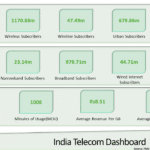An analysis of laptop launches of 2025 (Jan-Sep) gives us a comprehensive view of where the market is headed. The OEMs are layering their laptops with AI, making them lighter and focusing on durability and sustainability in terms of materials used to manufacture them.

Key takeaways of the analysis
Total Launches by Quarter
In 2025, Techarc tracked 68 laptop launches across the first three quarters, revealing a clear upward trajectory:
- Q1 recorded 20 launches, signalling a moderate start to the year.
- Q2 showed steady growth with 20 launches as brands ramped up activity.
- Q3 experienced an increase, reaching 28 launches, anticipating a surge in demand due to festive season preparation along with leveraging positive consumer sentiment after the announcement of next generation GST reforms making more money available in the hands of consumers to spend.
Brand Launch Distribution
Launches differ significantly by brand, reflecting varied market strategies:
- ASUS leads markedly with 21 launches, demonstrating broad portfolio expansion and aggressive market presence.
- Lenovo follows with 16 launches, affirming its strong hold in both consumer and professional segments.
- Dell and HP maintain moderate representation with 7 launches each, indicative of focused but limited refresh cycles.
- MSI and Samsung also contribute with mid-range launches of 5 and 4 respectively, while Acer and Microsoft have 3 launches each, emphasizing selective product introductions.
- Apple posts the fewest launches at 2, consistent with its premium, focused product strategy.
The dominance of ASUS and Lenovo points to broad diversification, while brands like Apple and Microsoft prioritize premium and highly specialized offerings.
Laptops by Processors
Intel continues to lead the laptop processor market in 2025, powering 61.8% of newly launched laptops during Q1 to Q3. AMD maintains a strong presence, featuring in 23.5% of launches, highlighting healthy competition in mainstream and performance-driven segments overall.
Qualcomm’s share, now nearly 12%, showcases growing adoption of ARM and AI-focused Windows laptops, while Apple Silicon captures just 2.9% due to fewer launches and a premium-tier focus. This distribution signals both x86’s ongoing dominance and a gradual shift toward next-gen architectures and innovative laptops in the market.
Made in India
8 out of 68 laptops launched in Q1-Q3 2025 were made in India, representing less than 12% of the new models. This underlines the relatively limited yet growing local manufacturing footprint within the Indian laptop segment, despite strong domestic demand and ongoing government initiatives to boost “Make in India” electronics.
Launches by Price Segment
Product launches skew toward mid-premium and premium price tiers:
- The 70K-100K INR segment leads with 26 (38%) launches, reflecting a strong demand base among professionals and enthusiasts.
- The luxury segment above 150K INR also records significant activity with 16 (24%) introductions, catering to premium and performance-focused users.
- Mid-tier segments (50K-70K and 100K-150K) maintain balanced attention, with 13 (19%) and 11 (16%) launches respectively, addressing diverse consumer needs.
- Entry-level laptops under 50K INR are scarce, with just 2 (3%) launches, suggesting less emphasis on the budget market possibly due to saturation or less innovation at this price point.
This distribution illustrates an industry focus on mid-to-high-end users, likely driven by AI and gaming hardware demands.
Extremes in Weight: Lightest & Heaviest Laptops
The 2025 laptop launch spectrum highlights contrasting design philosophies:
- Microsoft’s Surface Pro 12 (0.86 kg) and Surface Pro 9 (0.88 kg) top the lightness chart, epitomizing ultra-portable, detachable designs ideal for frequent travelers and mobile professionals. ASUS’s Zenbook A14 (0.98 kg) and Lenovo’s Yoga Slim 7i Gen 10 Aura (1.19 kg) also emphasize travel-friendly computing without major performance compromises.
- In contrast, the heavyweight category is dominated by Dell’s Alienware series (Alienware 18 Area-51 at 4.34 kg is the heaviest), alongside ASUS ROG Strix and Lenovo Legion Pro 7i models tipping near or above 2.8 kg. These machines prioritize peak performance, advanced cooling, and gamer-centric features over portability.
This sharp division reflects market segmentation between ultra-portables and power-hungry, gaming-caliber laptops.
AI vs. Gaming Laptops Launches
A growing emphasis on AI-enabled devices shapes 2025’s launch dynamics:
- AI laptops lead with 34 launches, underscoring an intense industry focus on integrated AI processing, productivity enhancements, and novel security features.
- Gaming laptops remain robust with 19 launches, reflecting sustained consumer interest in high-performance gaming and creative workstations.
The momentum for AI laptops indicates new workflows embracing machine learning and intelligent automation, while gaming laptops continue evolving with improved hardware and cooling technologies.
Processor Performance Segmentation
The processor landscape segments into entry and flagship tiers:
- Entry-level Intel Core Ultra 5 models appear in cost-conscious devices such as Acer Swift Neo, Samsung Galaxy Book5, and Lenovo Yoga Slim 7i Gen 10 Aura, targeting users prioritizing efficiency and affordability.
- Flagship-level Intel Core Ultra 9 275HX processors power premium launches like ASUS ROG Strix G16 and Scar 16, Dell Alienware 16 and 18 series, and Lenovo Legion Pro 7i Gen 10, catering to high-demand gaming, content creation, and AI workloads.
This division aligns processors to use cases ranging from basic productivity to intensive multi-threaded processing.
Most Affordable AI Laptops
- ASUS leads affordability benchmarks offering VivoBook S 15 and VivoBook 14 models as accessible AI-capable devices for budget-conscious users in Q1 and Q3.
- HP’s OmniBook 3 14” AI PC in Q2 provides competitive mid-year options for entry AI laptops, reinforcing market diversity.
- Among these, the ASUS VivoBook 14 stands out as the year’s most accessible AI laptop with widespread availability and Copilot+ support.
Most Affordable Gaming Laptops
- MSI’s Cyborg 15 commands early market leadership in Q1 for affordable gaming laptops, paving the way for budget gaming.
- ASUS’s TUF Gaming F16 in Q2 and Acer’s Swift Go 14 AI in Q3, which blends AI features into gaming, reflect a broadening of mainstream gaming options.
- Overall, MSI’s Cyborg 15 remains the most budget-friendly gaming laptop throughout 2025.
Top 5 Lightest Laptops
- Ultraportables like Microsoft Surface Pro 12 and 9 define the pinnacle of portability.
- ASUS Zenbook A14, Lenovo Yoga Slim 7i Aura Edition, and ASUS ROG Flow Z13 (a lightweight gaming 2-in-1) complete the list, balancing superb mobility with performance and premium build quality.
Smallest Laptops by Screen Size
- Screen sizes demonstrate a trend towards compactness, with ASUS Vivobook 14 (14″) leading in Q1, followed by Microsoft Surface Pro 9 (13″) in Q2, and Surface Pro 12 (12″) in Q3.
- The Surface Pro 12 laptop is the smallest overall, emphasizing ultra-portable form factors that blend mobility with versatility.
Most affordable laptop by price segments
Under 50K Segment:
ASUS VivoBook 15 stands out for combining affordability with reliable everyday performance and robust brand reputation, making it a preferred choice for budget-conscious users.
MSI Modern 14 offers strong value with balanced specs for basic productivity at a competitive price.
50K-100K Segment:
ASUS VivoBook 14 (OLED) uniquely offers premium display technology within an affordable price range, making it an excellent value pick for multimedia users and professionals seeking enhanced visuals without a high cost.
Acer Swift Neo and Lenovo IdeaPad 5 also provide compelling mid-range options with balanced performance and features.
Above 100K Segment:
Lenovo Yoga Slim 7i Gen 10 Aura Edition delivers premium build quality, portability, and powerful internals, making it a high value ultrabook for professionals and creators.
ASUS Zenbook 14 and HP OmniBook 5 AI PC complement this segment with AI-enhanced capabilities and efficient productivity, ensuring users get advanced technology for the price.
No of AI laptops in each price segment.
AI laptop launches in 2025 reflect strong growth in mid to premium price segments with distinct adoption patterns.
No AI laptops were launched in the under 50K INR segment, indicating that budget devices are yet to integrate advanced AI features due to cost and hardware limitations. The 50K-70K INR price segment saw a modest number of AI laptop launches, symbolizing the beginning of AI feature adoption in affordable mainstream products.
The 70K-100K INR segment emerged as the primary market for AI laptops with the highest number of launches. This segment caters to productivity-focused users seeking AI-enhanced capabilities at a reasonable price.
Higher-end segments, including 100K-150K and particularly above 150K INR, saw focused AI laptop launches, mainly in Q2 and Q3. The surge in this premium segment highlights demand from professionals and power users leveraging AI for intensive workloads and cutting-edge productivity.
No of gaming laptops in each price segment
Gaming laptop launches in 2025 are concentrated mainly in higher price segments, with no models in the under 70K INR range. The 70K-100K segment includes five gaming laptops, offering a balance of affordability and capable performance for casual gamers.
The 100K-150K segment has three gaming laptops, targeting power users seeking enhanced features and better hardware.
The majority of gaming laptops, 11 models, fall in the premium above 150K INR segment, reflecting demand for high-performance devices equipped with advanced GPUs and cooling systems suited for serious gamers and creative professionals.






Leave a Reply
You must be logged in to post a comment.